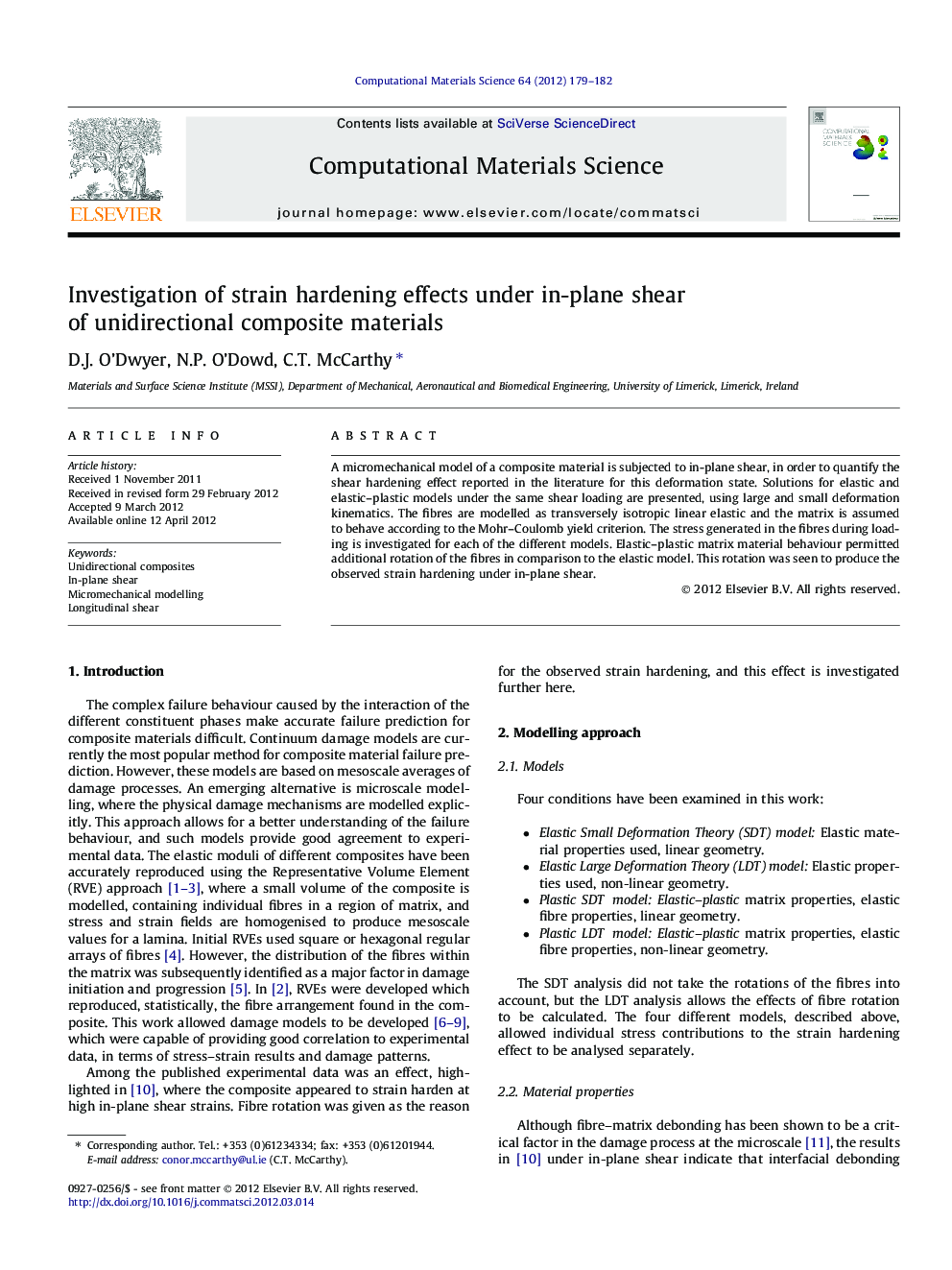| Article ID | Journal | Published Year | Pages | File Type |
|---|---|---|---|---|
| 1561706 | Computational Materials Science | 2012 | 4 Pages |
A micromechanical model of a composite material is subjected to in-plane shear, in order to quantify the shear hardening effect reported in the literature for this deformation state. Solutions for elastic and elastic–plastic models under the same shear loading are presented, using large and small deformation kinematics. The fibres are modelled as transversely isotropic linear elastic and the matrix is assumed to behave according to the Mohr–Coulomb yield criterion. The stress generated in the fibres during loading is investigated for each of the different models. Elastic–plastic matrix material behaviour permitted additional rotation of the fibres in comparison to the elastic model. This rotation was seen to produce the observed strain hardening under in-plane shear.
► Hardening effect under longitudinal shear. ► Additional fibre rotation permitted through matrix plasticity. ► Increase in fibre longitudinal and shear stresses.
